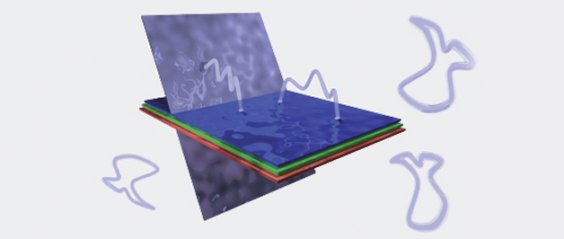
- An important research issue of Research Area A is the string theory which attributes fundamental forces and particles to thread-like and two-dimensional structures. // © TUM, Felix Rust, Sebastian Moster
It is assumed that the same physical laws are applicable anywhere in the Universe, which is formulated in the standard model of elementary particles. However, this standard model contains some explanatory gaps: it does not function for extremely small distances and immensely high energies – i.e. exactly the conditions of the Universe immediately following the “Big Bang”.
Therefore, scientists in Research Area A of the Excellence Cluster Universe, are researching how matter reacts when it is compressed within the narrowest of spaces and at high energies. The objective is to expand the existing standard model in the direction of a generally valid, cosmological standard model. For this reason, particular attention is being paid to gravity. Based on its characteristics it cannot be placed into the scheme of the standard model. In order to circumvent problems with the traditional standard model, physicists have developed a number of additional concepts, for instance the string theory. This involves a mathematical working model that presupposes the existence of additional spatial dimensions.
The task of scientists in Research Area A is to examine and further develop various theories. In so doing they closely collaborate with physicists who perform experiments in particle accelerators. Great hopes are being placed on new observations – and new particles – from the Large Hadron Collider (LHC) at CERN: Particle collisions at very high energies are expected to reveal as yet undiscovered particles, which are assumed to be present according to theoretical models.





